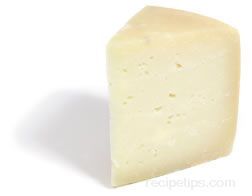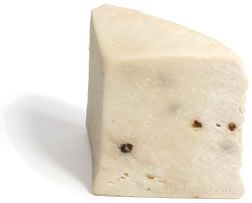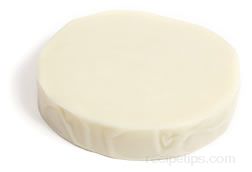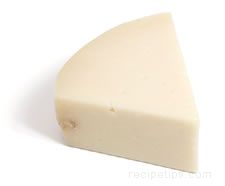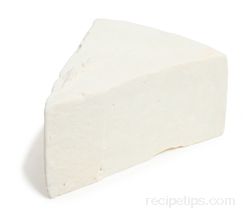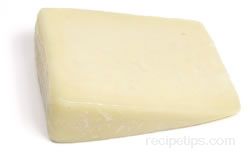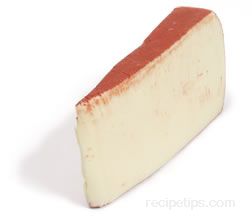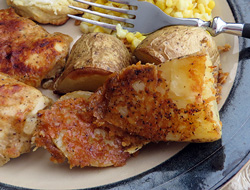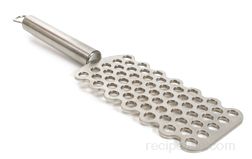Cheeses of Italy: Parmesan to Trugole
ParmesanParmesan is a well-known semi-hard to hard Italian cheese made from partially skimmed cow's milk. Parmesan cheese can be purchased as a young cheese or as an aged cheese. The young cheese is aged at least 10 months and is sold in block, flaked, grated, or shredded forms. As a young cheese, it is not as flavorful nor is it as firm as aged Parmesan, but it still has had enough time to age to begin developing a distinctive flavor. |
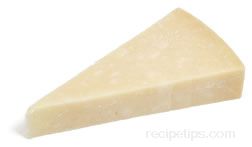 |
|
The mature Parmesan, which has aged from 18 months to 4 years, is a sharp, salty, full-flavored cheese with a firm to hard texture that makes it excellent for grating. Some of the well known aged Parmesan cheeses include Vecchio, aged 18 to 24 months; Stavecchio, aged 24 to 36 months; and Stravecchione, aged 36 to 48 months. The American version of Parmesan does not have as strong a flavor as the Italian version and its texture is not as crystalline. Several common Italian cheeses that can be substituted for Parmesan are Grana Padano, Pecorino Romano or Parmigiano Reggiano. To grate Parmesan cheese, run a piece of the cheese over the holes in a handheld grater or use a rotary cheese grater. To shave the cheese, run a vegetable peeler over a block, paring off paper-thin sheets of cheese. Regardless of the method you choose to cut the cheese, make sure to save the rind after using all of the cheese so that you can use it for flavoring sauces, soups, or marinades. To store Parmesan cheese, wrap it in foil and store it in the driest section of the refrigerator. If the cheese dries out, wrap it with a moist paper towel followed by foil for a day. The cheese can remain stored for a month or so before the flavor begins to deteriorate rapidly. | |
Parmigiano-ReggianoParmigiano-Reggiano is a variety of Parmesan cheese that is considered to be the best. It is aged for at least 24 months. In order to be labeled as Parmigiano-Reggiano, it must be produced in specific provinces of Italy. This fragrant cheese provides the most flavor when it is freshly grated, so it is generally used in a grated form. It is yellow in color and has a tough yellow to gold-colored rind that helps to keep the cheese fresh. The cheese has a delicate but rich nutty flavor within a superior texture that is grainy and somewhat brittle when aged; however, the cheese isn't too dry. Parmigiano-Reggiano makes a good cooking cheese because it doesn't become runny or rubbery when melted. |
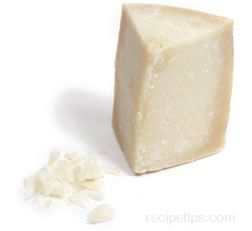 |
| To store Parmigiano-Reggiano, wrap the cheese in foil and keep it in the driest section of the refrigerator. If it dries out, wrap the cheese with a moist paper towel and foil for a day. The cheese can remain stored for a month or so before the flavor deteriorates rapidly. Substitute Italian Grana Padano when Parmigiano Reggiano is not available. | |
PecorinoPecorino is the Italian name given to any fresh medium-aged or matured cheeses made from sheep's milk. Some Pecorino Toscano cheeses are made with a combination of sheep's milk and cow's milk. The fresh (fresco) Pecorino cheeses are soft white cheeses with a mild, slightly lemony flavor, such as Ricotto Pecorino and Ricotta Salata. Their texture, which is slightly oily, can range from soft and moist to crumbly and granular. As the Pecorino varieties age, the bone-colored paste becomes darker in color with a firmer texture and a saltier flavor. The traditional way that Pecorino is produced is with a salted rind that is painted black. Since the aged Pecorino cheeses are much sharper tasting, they are generally sliced as thin shavings that can be combined with meat, fruits, or breads. Aged Pecorinos are also used as grating cheeses for toppings on salads, pasta, and vegetable dishes. One of the varieties of Pecorino that is often eaten young is known as "Pecorino Toscano," made in Tuscany, Italy. As a young cheese, it has a whiter color, a creamier texture, and a somewhat nuttier flavor. Versions of this cheese are also made with cow's milk, which can typically be detected by the yellowish tint to the cheese. Another Tuscan Pecorino is the "Pecorino Senese" or Senesi, which is a cheese that has a reddish rind due to the rind being rubbed with tomato paste. In years past, the rind was rubbed with sheep's blood and noted for its red exterior; however, regulations enacted for the cheese required the substitution of tomato paste for the sheep's blood in order to maintain the red appearance of past cheeses. |
Pecorino Toscano
Pecorino Pepato |
|
The most popular of the aged pecorino cheeses is the "Pecorino Romano," which has a hard yellow rind with a yellowish white interior. This cheese is typically aged for 8 months to a year before being eaten. Sharp in flavor, it is a cheese that is thinly sliced or served grated. Pecorino Sardo, which may also be referred to as simply "Sardo" or as "Fiore Sardo," is a type of Pecorino made on an island in the Mediterranean Sea. Although there are a number of Sardo cheeses produced throughout the world that are not actual Pecorino Sardo, the authentic type is produced only in Sardinia, Italy. Pecorino Sardo is eaten as a young cheese or as a matured cheese and is very similar in flavor to Pecorino Romano but a bit milder. It can be served as a table cheese or added to sauces when a milder tasting Pecorino is desired. Pecorino Siciliano is the name for the Pecorino cheeses produced in Sicily, Italy. The most well known of these cheeses are Canestrato (or Incanestrato, as it is also known) and Pepato. Canestrato is a made by placing the cheese curds in baskets where the whey is drained off. The curds bond together, taking on the irregular shape of the basket weave, which forms the shape of the outer rind. Aged for up to 6 months, the cheese is sold as a young cheese, while the sharper and more aromatic cheeses are aged for up to a year and are sold as grating or slivered snacking cheese served with meats, breads, and over pasta. The Sicilian Pepato is a variety of Pecorino cheese in which black peppercorns are added to enhance the flavor. Available as a fresh cheese or as an aged cheese, Pecorino Pepato has a flavor that is mildly salty and peppery that becomes spicier with age. As it ages, it becomes a good cheese for grating and can be used for baked potatoes, grilled vegetables (such as corn on the cob), or for pasta dishes. For the best results, select Pepato that has a bone white color and a mild aroma. Pecorino cheeses can be a good substitute to Parmesan, although sharper in flavor than Parmesan, all aged varieties are considered to be good grating cheeses for use in sauces and salads or on pasta. Pecorino can also be served as a dessert cheese, with honey drizzled over the top. As the Pecorino ages, it may become too dry and too strong or "sheepy" tasting. Select young to year old chesses, making sure they are not cracked or molded in appearance. | |
Pecorino RomanoPecorino Romano is an aged Italian cheese made from sheep's milk that has a hard yellow to dark brown rind and a yellowish white interior. Italian cheeses made with sheep's milk are always referred to as a Pecorino cheese. Aged Pecorino has a salty, tangier, and somewhat fruitier flavor than Fresh Pecorino. As the cheese ages, the flavor intensifies. Pecorino Romano can be used as a good substitute for Parmesan, although it is sharper in flavor. It is considered a good grating cheese for use in sauces, salads, or on pasta. |
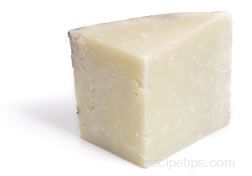 |
PiavePiave is a cow's milk cheese that is made in the Piave River valley region of Belluno, Italy. It is very similar to Montasio cheese. Like Montasio, Piave is made from the milk of two milkings. The evening milking is semi-skimmed with a natural skimming process to remove the cream before the milk is blended with the milk from the morning milking. |
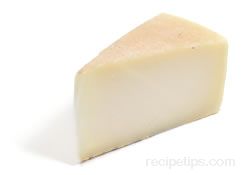 |
|
Produced in wheel shapes, Piave cheese has a dense texture without holes. It is straw-yellow in color and has a flavor that is slightly sweet and delicate. When produced as a fresh cheese (aged for a few months), it is semi-soft and easy to cut. It ripens to a semi-matured stage at six months, and it becomes a fully matured cheese after being aged for ten months. Once fully aged, it becomes hard and is well suited as a grating cheese. The aged cheese is referred to as Piave Vecchio or Stravecchio. Piave cheese can be used as a snacking cheese when matured to six months or less. When fully matured, it can be grated onto salads and pasta dishes; or as it is commonly used, it can be served as a garnish for oven-baked polenta. | |
Podda ClassicoProduced on the Italian island of Sardinia (Sardegna), Podda Classico is made using a blend of pasteurized cow's milk and sheep's milk. Aged for six to twelve months, Podda Classico cheese is formed with a grooved outer rind, which is the result of compressing the curd to firm up the paste. The inner paste is golden yellow with a hard crumbly texture. The cheese has a sweet and somewhat nutty flavor. The taste of this cheese is somewhat like a combination of an aged Romano and Parmesan cheese. It pairs well with full-bodied red wines. Since it is too brittle to grate, Podda Classico is a good cheese to break apart for snacking or for use on appetizer trays. A Podda "Rigato" cheese is also produced, which is the shorter-aged "sister" cheese to Podda Classico. |
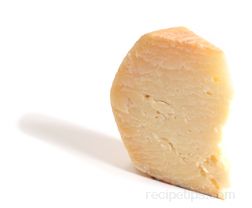 |
ProvoloneProvolone is a famous Italian cheese made from whole cow's milk. It has a firm texture and a flavor that ranges from mild and slightly sweet or spicy when young to strong, tangy, and somewhat salty as it ages. The cheese is generally aged for two to three months, but in some cases, it is aged for as long as six months. It is pale yellow in color but deepens in color and flavor the longer it is aged. Provolone is a good cheese to use when cooking, and when aged, it becomes harder in texture, so it can be used for grating. It goes well on sandwiches or served as an appetizer. American versions of this cheese, generally very mild, are sold in rounded or square blocks that are cream colored. The traditional Italian version has more flavor and is typically sold as an aged provolone. | |
|
Fresh Provolone |
Aged Provolone |
RicottaRicotta is an unripened Italian cheese made from cow's milk, ewe's milk, or goat's milk. Following the removal of the curds from the whey, the whey is reheated to form another curd that becomes ricotta cheese. As it is allowed to dry, the result is a white cheese with a soft, crumbly texture and a mildly sweet flavor. Traditional Ricotta is made from sheep's milk whey, which most often is the whey remaining after making Pecorino Romano. Typically, whey cheeses are used mainly for cooking in such savory dishes as lasagna or tomato and cheese tarts, as well as for pasta fillings, such as the type used for ravioli. It can also be added to salads, served as a dessert cheese with fruit, or baked into pastries. To produce the fresh form of Ricotta, cheese makers skim the small white lumps off the top of the heated milk to create a pure white, very soft, smooth to granular-textured cheese similar to cottage cheese. It is then packaged in round plastic containers for ease of handling. Firm Ricotta is produced by removing more moisture, such as occurs when making Ricotta Infornata, Ricotta Romano, and Salata Ricotta. Ricotta Infornata is a smoked version that has been baked and lightly browned. Ricotta Romano is a cheese typically made from sheep's milk. Ricotta Salata is a salted and dried cheese with a texture similar to feta cheese. Mild in taste, ricotta cheese is a good ingredient to use for adding texture to sweet foods as well as for some savory dishes. | |
|
Ricotta - Wedge |
Ricotta - Spreadable |
Robiola di RoccaveranoRobiola di Roccaverano is a traditional Italian farmhouse cheese made primarily from cow's milk that is blended with a smaller amount of either sheep's milk or goat's milk. It is made as a fresh cheese that is aged for only a few days or a few weeks but typically no more than three weeks. As a fresh cheese, it does not have a rind and is produced as a soft-textured, fine-grained, spreadable cheese that is pale white in color. When made with pasteurized milk, this cheese is soft-textured and spreadable and has a sweet yet somewhat sour aroma and flavor. If made with unpasteurized milk, the cheese has a rich and somewhat yeasty flavor and aroma. | |
RomanoRomano refers to a variety of cheeses generally made from cow's milk, goat's milk, or sheep's milk that are all classified under the Romano name. Some of the common varieties include Caprino Romano, which is a very sharp cheese made from goat's milk, and Vacchino Romano, which is a mild cheese made from cow's milk. The most well known is the Pecorino Romano, which is made from sheep's milk and has a somewhat fruity, salty, sharp flavor. The Romano cheeses in the United States are generally made from a combination of cow's milk and goat's milk or from only sheep's milk or cow's milk. The cheese is pale yellow and has a very firm texture, making it a good grating cheese. To grate Romano cheese, use a handheld grater or a rotary grater. To shave, use a vegetable peeler and slice very thin pieces from the block of cheese. |
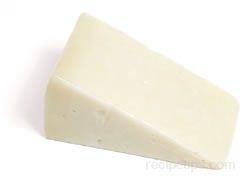 |
ScamorzaScamorza is a type of mozzarella cheese that is dried and heavily smoked. The lightly smoked version of mozzarella is known as Affumicata. Mozzarella Affumicata is formed into large balls of cheese and smoked over wood chips to become dark brown in color, whereas Mozzarella Scamorza is smoked over pecan shells to enhance the flavor and darken the color of the cheese. It also has a denser texture. |
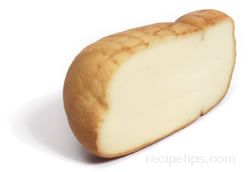 |
TaleggioTaleggio is an Italian cheese made from cow's milk and has a flavor that varies from slightly sharp to strong or pungent, depending on the age. The young cheese is pale yellow and semi-soft, while the mature cheese is creamy white with a pinkish-gray crust and a soft, smooth, somewhat rubbery texture. Continued aging produces a darker yellow color and a soft, runny consistency. The flavor of the Taleggio cheese goes well with a robust wine. It is an excellent dessert cheese when paired with fruit, and it's a nice complement to salad greens. Taleggio is also a good cheese for baking, as it melts well and retains its shape. |
 |
TrugoleTrugole is an Italian cheese originating from the mountainous region of Asiago where the altitude and lush meadows provide excellent pastures for the cows to develop their milk. Produced as a cow's milk cheese, Trugole is formed into washed-rind wheels weighing from one to six pounds. The cheese is allowed to mature for two to three months. During this aging process, it develops a straw-colored semi-firm paste that has a mild fruity flavor. Trugole is an excellent cheese for snacking, for serving with crusty breads, or for melting over various dishes. |
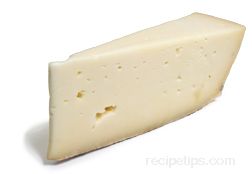 |





